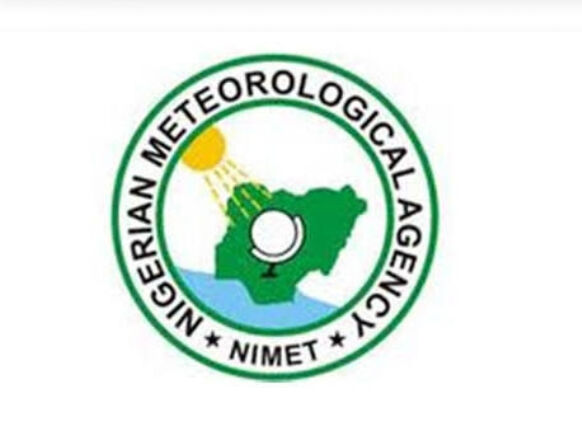NiMet 2025 Rains Forecast Outlines Options for Farmers
Seasonal Climate Prediction (SCP) unveiled to the public penultimate week in Abuja predicts that most parts of the country would experience significant rainfall at the beginning of 2025; and the rains would likely come before the onset.
The southern states of Delta, Bayelsa, Rivers and Anambra, as well as parts of Oyo, Ogun, Osun, Ondo, Lagos, Edo, Enugu, Imo and Ebonyi, are predicted to experience an early beginning. A normal onset is anticipated for the rest of the country.
However, northern states like Plateau and parts of Kaduna, Niger, Benue, Nasarawa, Taraba, Adamawa and Kwara, are expected to have a delayed commencement of the rains.
Parts of Zamfara, Katsina, Kano, Kaduna, Jigawa, Plateau, Bauchi, Borno, Yobe, Adamawa, Taraba, Niger, Kwara, Kogi, Federal Capital Territory (FCT), Ekiti and Ondo states, are anticipated to have an early end to the rainy season as compared to the long-term average.
It is anticipated that parts of Kaduna, Nasarawa, Benue, Lagos, Kwara, Taraba, Oyo, Ogun, Cross River, Delta, Akwa Ibom, Ebonyi, Anambra and Enugu may see a delay to the end of the rainy season.
As a result, persons interested in rain-fed agriculture and other rainfall-dependent enterprises in Nigeria have been advised to consult the Nigeria Meteorological Agency or relevant publications for projected onset dates.
The predicted end of the rainy season indicates that parts of Zamfara, Katsina, Kano, Kaduna, Jigawa, Plateau, Bauchi, Borno, Yobe, Adamawa, Taraba, Niger, Kwara, Kogi, FCT, Ekiti and Ondo are expected to see an early cessation compared to the long-term average.
The end of the season is expected to be delayed over parts of Kaduna, Nasarawa, Benue, Lagos, Kwara, Taraba, Oyo, Ogun, Cross River, Delta, Akwa Ibom, Ebonyi, Anambra and Enugu.
For much of the country, the length of the rainy season is expected to be roughly normal in 2025. However, the season may be shorter than usual in Borno and parts of Yobe State. In Lagos and Nasarawa states, the season is likely to be longer than normal in 2025.
The projected length of 2025 annual rainfall is forecast to be from normal to below-normal rainfall in much of Nigeria, but areas in Kebbi, Kaduna, Ebonyi, Cross River, Lagos, Abia and Akwa Ibom states are expected to experience above-normal amounts of rain.
It is anticipated that May and June would have heavy rainfall, which could result in flash floods in coastal cities.
For the April-May-June season, Oyo State (Saki, Iseyin, Ogbomoso, Atisbo, Orelope, Itesiwaju, Olorunsgo, Kajola, Iwajowa and Oro Ire) is expected to experience a severe dry spell that lasts for more than 15 days after the start of rains.
During the June-July-August season of 2025, a severe dry spell that could last up to 21 days, is predicted for the northern states, while a moderate dry spell that could last up to 15 days is expected for Ekiti, Osun, Ondo, Ogun, Edo, Ebonyi, Anambra, Imo, Abia, Cross River, Delta, Bayelsa and Akwa Ibom.
The little dry season event in 2025 is only expected to impact parts of Ogun State and Lagos. Between 27 and 40 days will pass with little to no precipitation. On average, the little dry season in the South-West is predicted to start on July 22 in 2025.
A little dry season influence is expected over parts of Ogun, Oyo and Ekiti states, while Osun, Oyo, Kwara and a section of Ondo north are likely to experience light or mild little dry season.
Agricultural experts have advised farmers in Nigeria’s central states to adopt drought-resistant crop varieties and adjust their planting schedules in response to the predicted delay in rainfall onset.
Among those recommended are SAMMAZ 19 and SAMMAZ 20, FARO 44 and FARO 52, which are well-suited to Nigerian conditions.
Upland rice, farmers are however advised to wait until late May or early June when the rains stabilise, while lowland rice should be planted around July or August. Proper soil preparation and the use of viable seeds are crucial for a successful harvest.
The experts unanimously asserted that with the forecasted late onset of rains, farmers, especially in Benue, should plan strategically by choosing drought-resistant crop varieties, preparing their soil properly and adjusting their planting schedules, stressing that by following these guidelines, they can still achieve good yields despite the unpredictable weather conditions.
Malam Idris Saidu Garko, a specialist in crop productivity enhancement, said the NiMET had fulfilled its obligation to disseminate information promptly and that farmers and government agencies at all levels now have the responsibility of implementing best practices that would guarantee that sufficient measures have been taken to address the anticipated changes.

